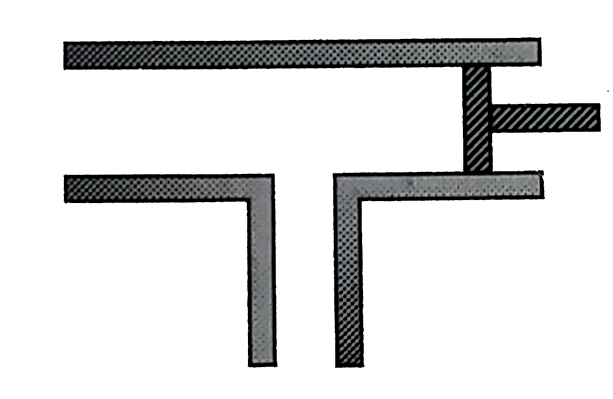In an experiment related to interference , Quinck's tube was employed to determine the speed of sound in air. A tunning fork of frequency 1328Hz was used as the sounding source . Initially , the apparatus , yielded a maximum sound intensity . Later , when the slidable tube was drawn by a distance of 12.5cm, the intensity was found to be maximum for the first time . Determine the speed of sound in air .
A distance of 12.5cm drawn aside implies a double path difference of 25cm.
Since the shortest path difference , which enables the intensity to become maximum once again is , obviously , λ.
so λ=25cm
v=1328s−1×25cm=332m/s
Therefore , the speed of sound in air is 332m/s.
Similar Questions
In Quincke's experiment the sound detected is changed from a maximum to a minimum when the sliding tube is moved through a distance of 2.50 cm. Find the frequency of sound if the speed of sound in air is 340ms−1.
View SolutionIn Quincke's experiment the sound detected is changed from a maximum to a minimum when the sliding tube is moved through a distance of 2.50 cm. Find the frequency of sound if the speed of sound in air is 340ms−1.
View Solution
Knowledge Check
Vibrating tuning fork of frequency v is placed near the open end of a long cylindrical tube. The tube has a side opening and is fitted with a movable reflecting piston. As the piston is moved through 8.75 cm, the intensity of sound changes from a maximum to minimum, if the speed of sound is 350 m/s. Then v is
 A500 HzB1000 HzC2000 HzD4000 Hz
A500 HzB1000 HzC2000 HzD4000 HzVibrating tuning fork of frequency n is placed near the open end of a long cylindrical tube. The tube has a side opening and is fitted with a movable reflecting piston. As the piston is moved through 8.75cm, the intensity of sound changes from a maximum to minimum. If the speed of sound is 350m/s. Then n is
 A500HzB1000HzC2000HzD4000Hz
A500HzB1000HzC2000HzD4000HzVibrating tuning fork of frequency n is placed near the open end of a long cylindrical tube. The tube has a side opening and is fitted with a movable reflecting piston. As the piston is moved through 8.75cm, the intensity of sound changes from a maximum to minimum. If the speed of sound is 350m/s. Then n is
 A500 HzB1000 HzC2000 HzD4000 Hz
A500 HzB1000 HzC2000 HzD4000 Hz
In a Quinck's experiment , the sound intensity being detected at an appropriate point , changes from minimum for the second time , when the slidable tube is drawn apart by 9.0cm. If the speed of sound in air be 336m/s, then what is the frequency of this sounding source ?
View SolutionIn a Quinck's experiment , the sound intensity being detected at an appropriate point , changes from minimum for the second time , when the slide able tube is drawn apart by 9.0cm. If the speed of sound in air be 336m/s, then what is the frequency of this sounding source ?
View SolutionIn a resonance tube experiment to determine the speed of sound in air , a pipe of diameter 5cm is used . The air column in pipe resonates with a tuning fork of frequency 480Hz , when minimum length of air column in 16cm . Find the speed of sound in air at room temperature.
View SolutionIn reasonace tube experiment with a tuning fork of frequency 480Hz the consecutive reasonance lengths are 30cm then determine speed of sound is
View SolutionIf two sources of frequencies 300 Hz and 303 Hz are sounded simultaneously, time interval between sounds of successive maximum intensity will be
View Solution
